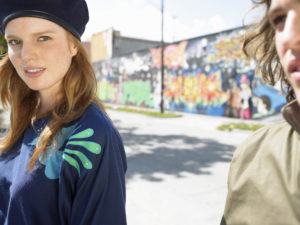
Sculpture artists often draw influence from the surroundings of their piece.
Last time, we we’re talking about pencil portraits, which couldn’t be more distant from the subject of today’s update. What we’re now focusing on is macro art – huge outdoor pieces, like sculptures and murals. In the case of the latter, to be clear, we’re not talking about graffiti, that’s something we despise as much as the next person. We’re talking about large surfaces where the owners have commissioned artwork to be created. That said, there have been times where graffiti inspired art has been commissioned, but the difference here is the intention, and indeed the permission to complete the piece in that location. In other words, art is always displayed in a place that has permission from the respective owner!

Many people are confused by the difference between graffiti and murals.
Regardless of the type of art, usually the first step of installation is to prepare the surface to be worked on. This is often more predictable than you might imagine, and typically involves cleaning to get a clean starting point. For walled areas, you’re usually going to use high pressure water, for which we rely on our trusty Wolf pressure washer, which is great as it runs on petrol so we can fill it up and use it anywhere. As a great tip – if you know a window cleaner, they”ll probably have a mobile water tank too to avoid the need to travel to refill with water. For floor based art, you’re more likely to focus on clearing and levelling the ground, which will more commonly involve removing stones and rocks and levelling earth, but on concrete or tarmac you may also need to turn to pressure washing too, which can conveniently also be used to remove the graffiti we were moaning about earlier…
Once you’re ready, the artists can get to work properly. The chances are that they may simply be erecting pieces that are already complete, or have been created in sections to be assembled on site. Alternatively, though, some artists and types of art are best completed on location, especially if the artist wished to draw inspiration from the area or pay extra attention to blending or contrasting with surroundings.